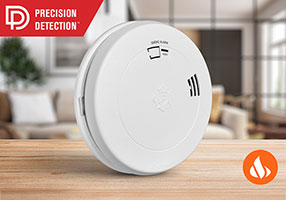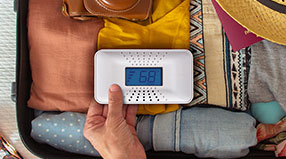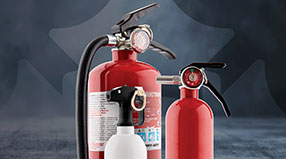Interconnected Alarms
Common Questions About First Alert Interconnected Alarms
I’m using basic smoke alarms. Why would I switch?
The installation of a fully operational smoke alarm continues to play an integral role in providing homes the best defense against the many dangers attached to undetected smoke. One of the limiting factors of a basic smoke alarm is that it will only alert the surrounding area. This can potentially create a scenario where you may not even hear a smoke alarm sounding off. Think of a basic smoke detector sounding off in a basement. There’s really no guarantee that someone living in a two story home will be able to hear it from their upstairs bedroom. It’s one of the most glaring weaknesses of a standard smoke detector and one that a First Alert Interconnected Smoke Alarm immediately addresses.
What are interconnected smoke alarms?
When seconds are vital in safely escaping in the event of an emergency, you’ll need a smoke and fire defense system that’s capable of alerting the entire home. First Alert Interconnected Smoke Alarms remove the limitations of a standard smoke detector by being able to link with one another. There’s a lot of inherent flexibility on display here as interconnected smoke alarms will allow homeowners to create a personalized smoke and fire defense system that’s unique to their home. We mentioned the possibility of not being able to hear a basic smoke detector sound off in opposing locations in a home. It’s a doubt that’s removed completely here as interconnected smoke detectors will sound off in unison when triggered. An interconnected smoke alarm that detects smoke in the basement will alert all other linked devices in the home.
How many First Alert Interconnect Alarms can I link together?
You’ll be able to interconnect up to 18 compatible First Alert Alarms together. This should be more than enough to create a custom smoke, fire and carbon monoxide defense suited specifically for your home.
Can I mix and match different types of alarms (such as smoke and CO)?
Yes, you can mix and match. Many First Alert Alarms have "smart interconnect" features that allow them to interpret both smoke and carbon monoxide signals, ensuring all alarms sound with the correct alert pattern for the specific danger detected.
Can I interconnect alarms from different brands?
No, it is not recommended to interconnect alarms from different manufacturers unless they are specifically listed as compatible. This is because different brands may use different wiring or communication protocols that are not designed to work together, which could compromise your safety system.
Will I have whole home coverage using interconnect alarms?
When the words whole home coverage are used, we tend to focus all of our attention on smoke and fire detection. Setting up interconnected smoke alarms is an excellent way of achieving this, but is it really home coverage? The First Alert brand excels in delivering protection on multiple fronts and one of those is dealing directly with the silent killer, carbon monoxide. First Alert Interconnected Combination Alarms are capable of identifying the dual threats of smoke and carbon monoxide. The same precision technology of identifying the location of detected carbon monoxide is on display here. You’ll know exactly when, where and which danger is present when using First Alert Interconnected Combination Detectors.



